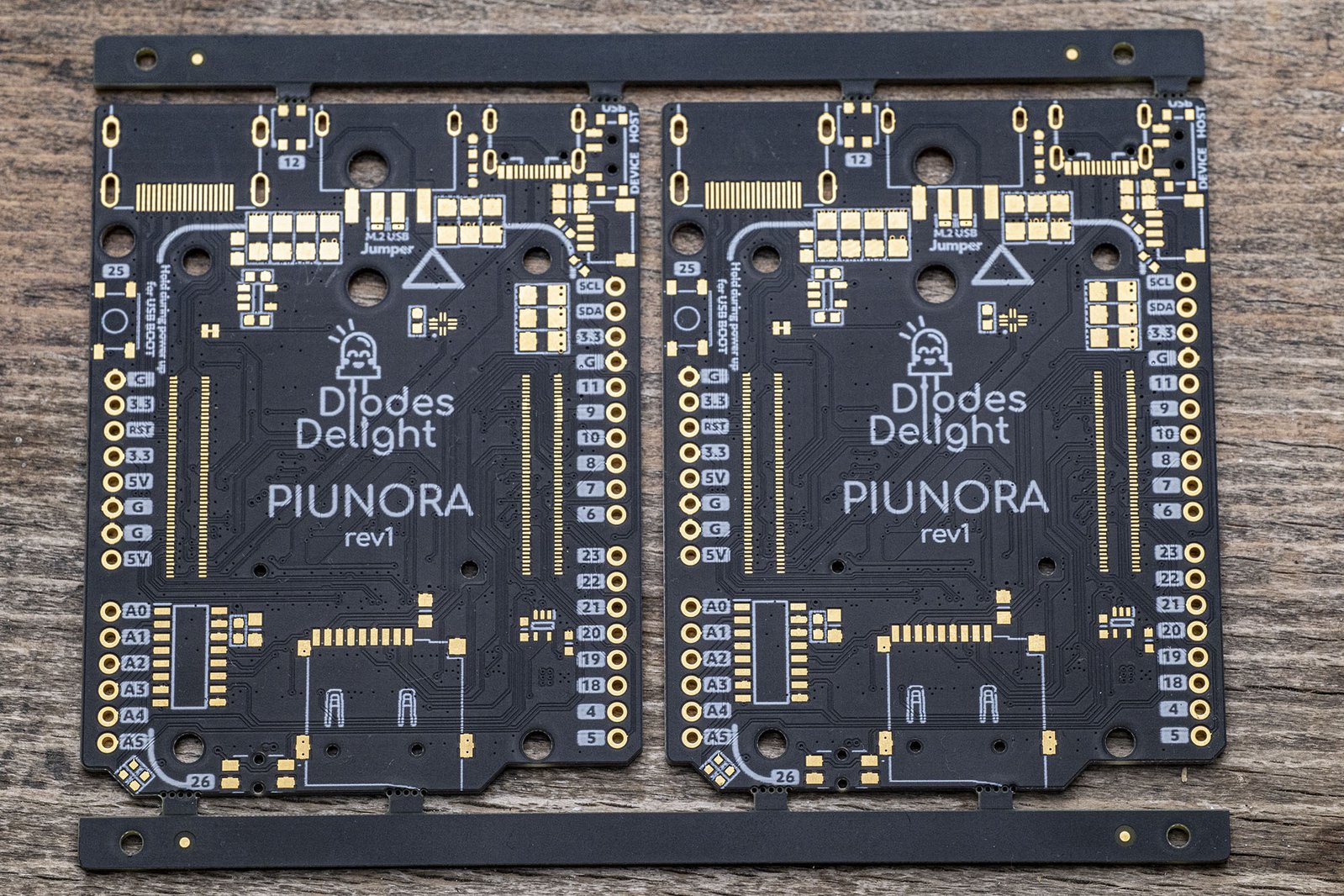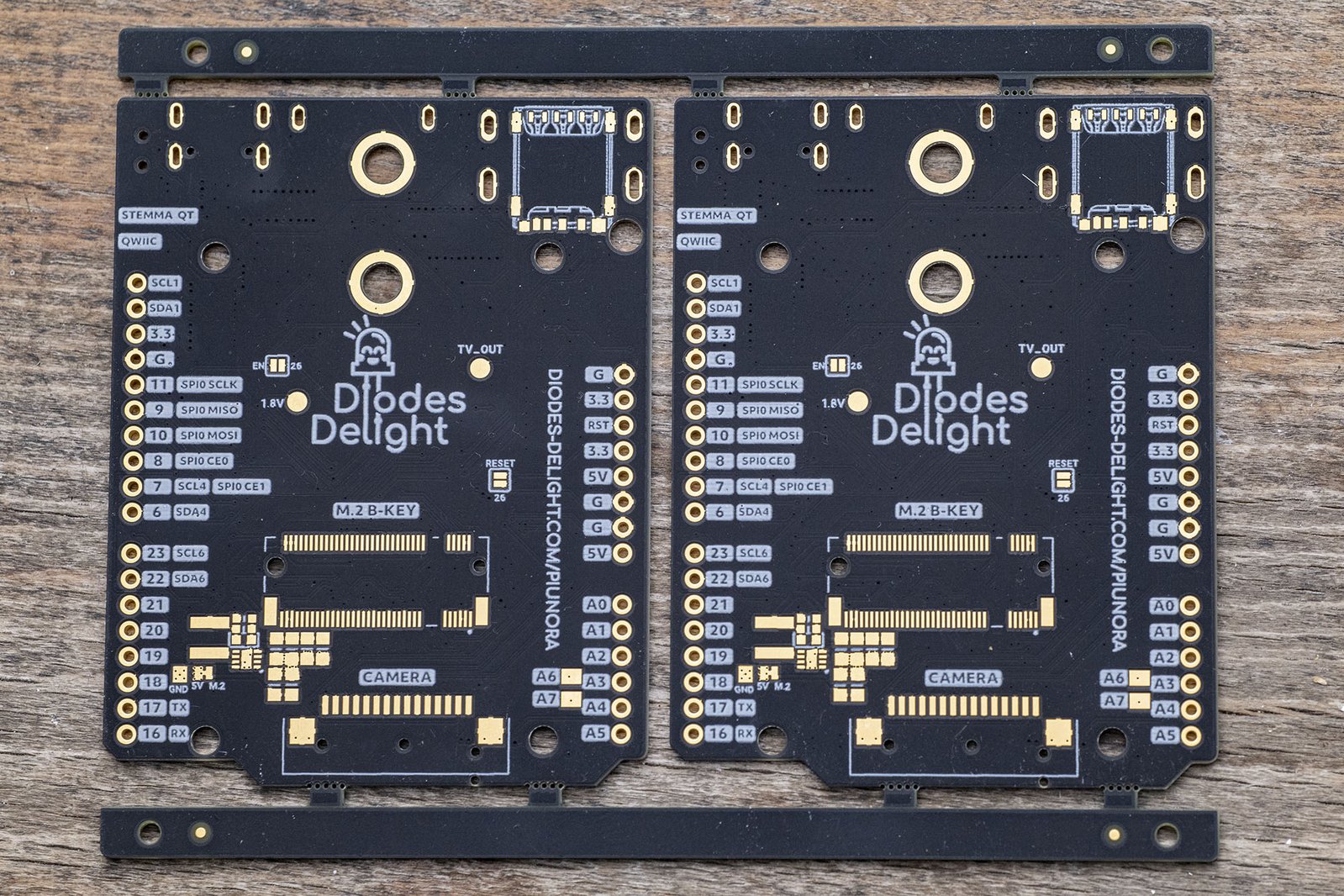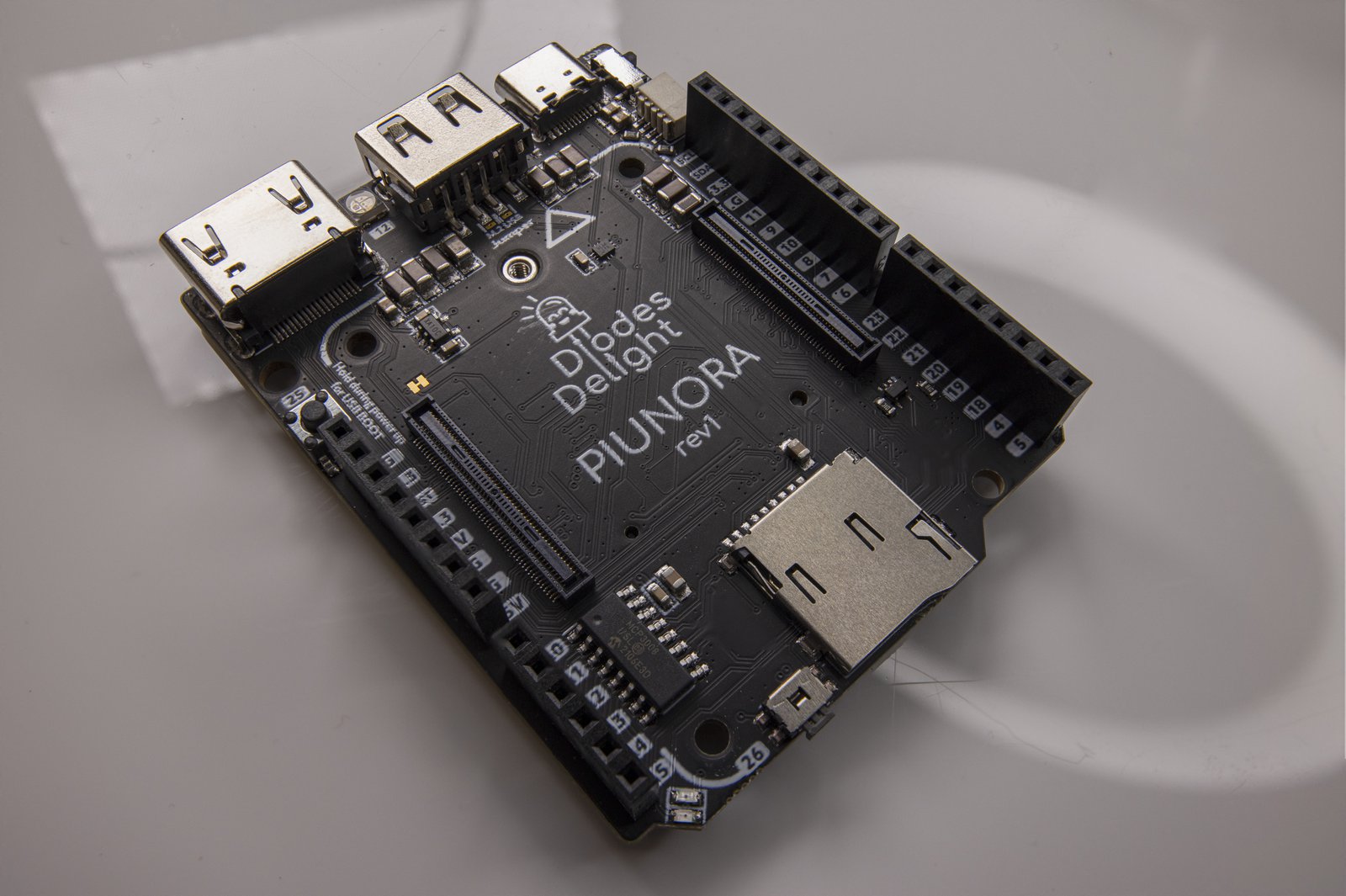A lot of things have happened since our last update.
Manufacturing Status
The good new first: mass production is under way as of last week. So things have not been delayed too badly. Production will take about 4-4.5 weeks. I will then get a few units shipped to me for a last inspection on my side before approving the final shipment to Crowd Supply for distribution to backers.
Silkscreen Issues
The issue with the silkscreen quality was mostly resolved. For technical reasons, the PCB fab can increase the top-side silkscreen quality only a little bit. On the bottom side, though, they applied some extra soldermask to fill in grooves from vias and traces. So everything is now clear and smooth on the back of the board, and those distortions are a thing of the past.
I decided to not delay things further by trying to tweak the top side further. Everything is readable, and that’s the most important thing. (The majority of Piunora’s silkscreening is on the back anyway.)
Below, you can see some photos of the revised silkscreen-printing method. All in all they are beautiful PCBs, I’m very happy with the ultra matte-black finish:
Final Assembly
I also received the final assembly from my manufacturer. While nothing essential has changed, I have researched a lot of drop-in replacement parts due to the component shortage, so I’ll be testing those just to be sure.
SIM-Card Connector Footprint
Maybe you spotted those extra little pads near the upper, right-hand corner of the bottom side of the PCB? That is a footprint for an optional SIM-card connector. Adding one will allow you to use Piunora with a WWAN card such as an LTE modem!
I left this as an optional feature for hackers because it’s too much of a hassle to support officially. (To begin with, you can only use it by bridging the M.2 USB solder jumpers to connect the USB host to the M.2 port. USB is needed for almost all WWAN cards.) So, while you’ll have to solder the SIM-card connector yourself, the footprint is there to make things a little easier for the adventurous. And don’t worry, I will provide part numbers and possibly a soldering guide for beginners.
Should this prove to be a popular hack, I can imagine offering a specialized version of Piunora, in the future, that is optimized for this use case. Increasingly, modern WWAN 5G cards (and some 4G cards) support eSIM, which does not require a SIM-card connector at all. So that might be another path
Packaging
The latest boards have also been packaged up, as a test, so I made a little unboxing video of a Piunora Pro. I have decided to go with kraft paper packaging, which is made from recycled materials, has no plastic films bonded to it, and is fully recyclable. Below is more or less what you can expect when you receive your Piunora in the mail:


